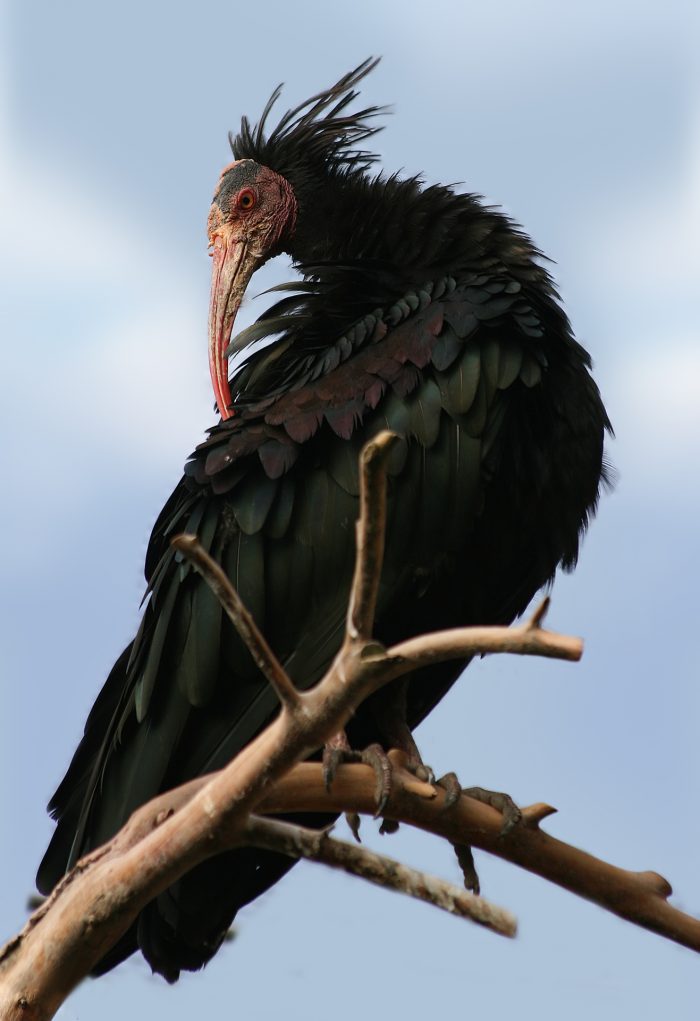Today I want to share one of my paintings that celebrates the beauty of the Southern Bald Ibis, Geronticus calvus. This species is near and dear to me. As a child, I sometimes saw them on the sport fields of my high school; and I still see them today, from time to time, while out on birding excursions. They are striking birds with their bright red bald heads and iridescent plumage. Their calls are melodious and mournful, a far-carrying ‘kew-kou-kloup’.
This species shares its genus with the Endangered Northern Bald Ibis, Geronticus eremita, which occurs from Morocco to the Middle East. There are also plans afoot to reintroduce it to Europe. The Northern Bald Ibis can be distinguished from the Southern Bald Ibis by the narrow plumes on its head. The Southern Bald Ibis is listed as Vulnerable and is endemic to South Africa, Lesotho and Swaziland. It is estimated that there are only 4,600 breeding birds of this species in the South African region. Its continued existence depends on the conservation of its preferred habitat, which is short, fairly moist grasslands in mountainous and highland areas. Grasslands are some of the most threatened habitats on Earth, much of which has been lost to agricultural expansion. Grasslands are also impacted by overgrazing from domestic animals as well as bush encroachment. Bald ibises are able to make use of some human-created ‘grasslands’, like sports fields and some agricultural fields. In areas with cattle, they will turn over and probe cow pats with their long, curved bills to hunt for beetles and grubs.

Bald ibises are also restricted by the availability of breeding sites. They are cliff-nesters and breed in the open areas of mountain faces, as well as river gorges and sometimes around waterfalls. One of the greatest causes in the decline of this species is human disturbance at their breeding sites and the degradation of their habitat. Most of their breeding sites occur on privately owned land, whereas only a small minority of breeding pairs are located on nature reserves or state forest land, which are the only areas where they are guaranteed protection.

An alarming sight at some of their nesting sites below the cliffs are piles of shiny, plastic buttons. They probably confuse these with beetles, ingesting them and eliminating them intact. It is not known whether this has a negative impact on them, but it might, and yet another reason why we should be concerned about the large amounts of near-indestructible human-made plastic objects accumulating in all environments around the globe.

